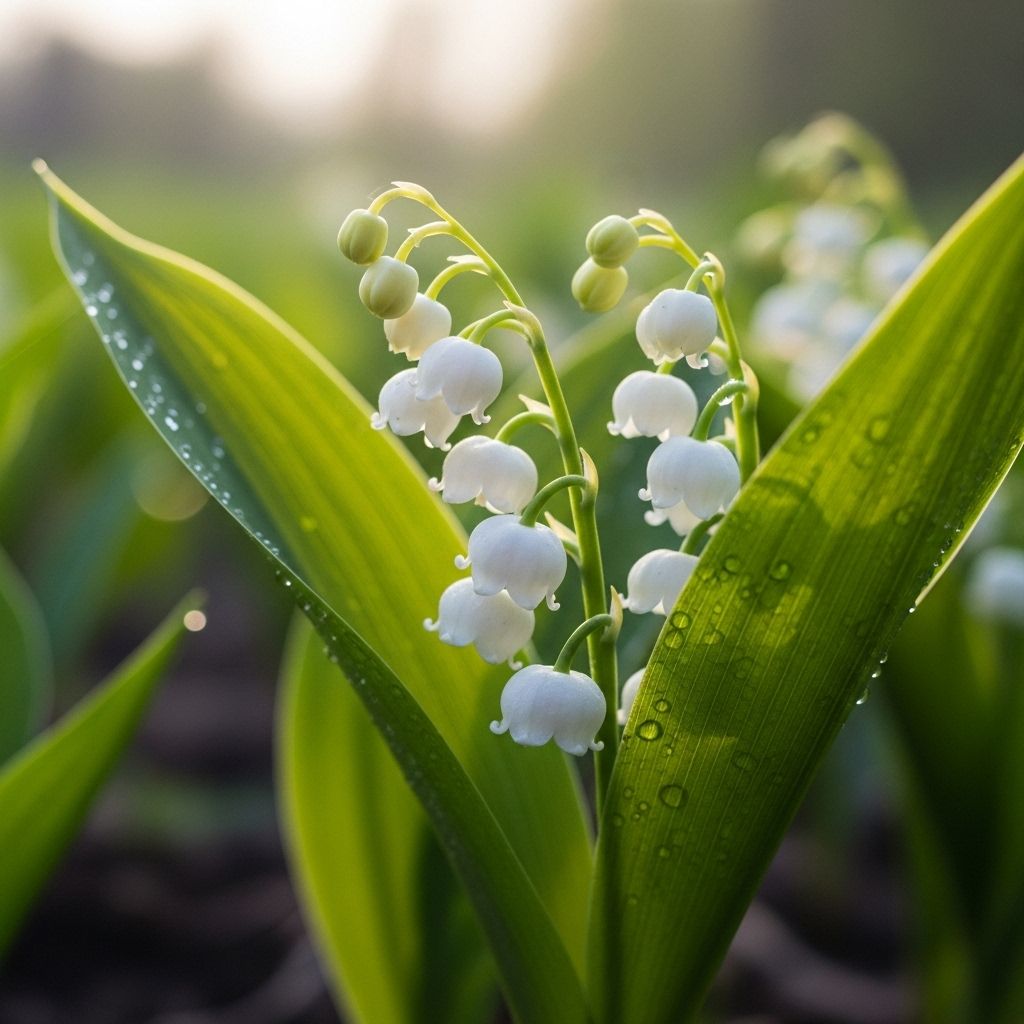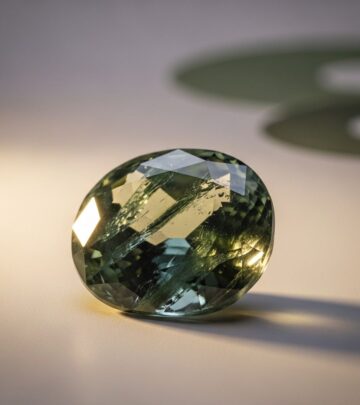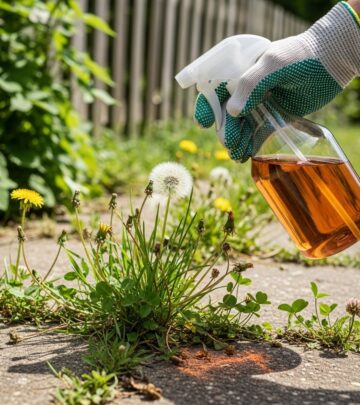Lily Of The Valley: Complete Guide To Growing, Scent & Decor
Discover the beauty, symbolism, growing secrets, and unique fragrance of lily of the valley—an iconic spring flower for gardens and homes.

Image: HearthJunction Design Team
Lily of the Valley: The Cherished Springtime Flower
Lily of the valley (Convallaria majalis) is a classic perennial beloved for its delicate, nodding, bell-shaped blooms and sweet fragrance. Steeped in tradition and symbolism, this shade-loving plant holds a special place in gardens, history, perfumery, and royal occasions. In this article, discover its meaning, origins, growing tips, perfume legacy, and decorative uses—plus why it’s both a symbol of joy and a plant to handle with care.
Meaning and Symbolism of Lily of the Valley
Lily of the valley is a plant rich in symbolism across cultures and centuries. Its dainty white or pink blossoms and lush green leaves evoke purity, renewal, love, and happiness. It is especially associated with:
- Purity and sincerity
- Joy and happiness
- Love and luck
- The return of happiness—often linked to the arrival of spring
- Motherhood and femininity
- Royalty—the late Queen Elizabeth II’s favorite flower and a staple in royal bouquets
This flower is notably the birth flower for May, signifying new beginnings and a return of joy after winter’s end. In France, it is traditional to give sprigs of lily of the valley on May 1st as a token of good luck and affection.
Botanical Profile and Origins
- Botanical name: Convallaria majalis
- Plant type: Herbaceous, perennial
- Native regions: Widespread across the northern hemisphere—Europe, Asia, and North America
- Height: Up to 20cm (8 inches)
- Flower characteristics: Up to 12 nodding, bell-shaped blooms per stem; each has six petals, typically white but sometimes pink
- Leaf characteristics: Lush, lance-shaped, medium-to-dark green leaves
- Fragrance: Sweet, distinctive, and highly prized in perfumery
Lily of the valley has been cultivated for centuries, with records dating back to at least 1000 B.C.
Why Is Lily of the Valley Special?
- Fast-spreading ground cover: Quickly forms a fragrant carpet of flowers and leaves, ideal for shaded or woodland gardens
- Royal and wedding associations: Frequently featured in royal events, notably in Queen Elizabeth II’s coronation bouquet and royal weddings
- Cut flower prowess: Popular for springtime posies and wedding bouquets thanks to its fragrance and elegant appearance
- Perfume and home scent: Its scent is widely used in designer perfumes and luxury candles, evoking freshness and nostalgia
- Wildlife value: Provides shelter for small wildlife and is deer-resistant
Lily of the Valley in Perfumery
The exquisite fragrance of lily of the valley—fresh, floral, and slightly green—makes it a foundation note for many iconic perfumes and home scents. While the flowers themselves are short-lived, their scent lingers in luxurious products across the globe. Notable perfumes featuring lily of the valley include:
- Dior Diorissimo
- Yardley London’s Lily of the Valley
- Chloé Eau de Parfum
- Penhaligon’s Lily of the Valley
The flower’s aroma is also popular in spring candles and home fragrances from brands like Jo Malone London, Diptyque, and Bamford.
How to Grow Lily of the Valley
Lily of the valley thrives without fuss and makes an ideal plant for beginners and experienced gardeners alike. Here’s how to grow it for best results:
1. Selecting Your Lily of the Valley
- Buy young plants or bare-root rhizomes (also called pips) in autumn or early spring.
- Choose preferred cultivars such as:
- Convallaria majalis ‘Albostriata’: Dark leaves with elegant white or cream stripes
- Convallaria majalis ‘Aureomarginata’: Leaves edged in creamy yellow
- Convallaria majalis ‘Rosea’: Delicate pink flowers—less vigorous but striking
- Convallaria majuscule ‘Greene’: A North American native ideal for naturalistic planting
2. Where and When to Plant
- Location: Thrives in partial to full shade—woodland or north-facing borders are ideal
- Soil: Moist, well-drained, humus-rich soil is best. Add compost or leaf mold for extra nutrition
- When: The best time to plant is late autumn so roots can establish during winter dormancy
3. Planting Instructions
- Depth: Plant pips just below the surface, about 5 cm (2 inches) deep
- Spacing: 10–15 cm (4–6 inches) apart to allow for spreading
- Water: Water well after planting and keep moist until established
Note: All parts of lily of the valley are poisonous—wear gloves when handling and keep away from pets and children
4. Ongoing Care
- Keep soil consistently moist but not waterlogged, especially during dry spells
- Feed with organic mulch in spring to retain moisture and enrich soil
- Divide clumps every few years to control spread and rejuvenate plants
- Remove faded flower stems and any yellowing leaves to keep plants tidy
5. Potential Challenges
- Invasive potential: Lily of the valley can spread rapidly and overwhelm small areas—consider root barriers to control growth
- Pests and diseases: Generally pest-free, but watch for fungal leaf spot in overly damp locations
- Toxicity: All parts are toxic if ingested—handle with care
Ways to Decorate With Lily of the Valley
Lily of the valley brings effortless elegance and freshness to home decor, whether used as a fresh, dried, or faux flower. Here are some creative ideas:
- Simple posies: Gather a few stems for a minimal, fragrant vase arrangement
- Spring tablescapes: Add sprigs to table settings or napkin rings for seasonal charm
- Wedding bouquets: A classic flower for bridal bouquets, symbolizing love and good luck
- Dried arrangements: Enjoy their beauty long after flowering season
- Faux options: High-quality artificial lily of the valley is perfect for year-round decor, especially where real flowers might wilt quickly
Their understated form means they blend seamlessly with any decor style, from traditional to modern, farmhouse to minimalist.
Lily of the Valley: Wedding and Royal Connections
- The flower of choice in many royal weddings and ceremonies
- Particularly beloved by the late Queen Elizabeth II and frequently chosen for bouquets at royal events
- Symbolizes enduring love, humility, and happiness—making it a meaningful inclusion for springtime nuptials
Why You’ll Love Lily of the Valley
- Brings an air of serenity and joy to gardens and homes
- Easy to grow and maintain, perfect for shady corners and underplanting trees
- Beautiful, delicate flowers with a fragrance that instantly uplifts spirits
- Decorates interiors with subtle grace—fresh or faux, solo or in mixed arrangements
- Associated with cheerful spring memories, weddings, and celebrations
Lily of the Valley: Quick Facts Table
| Aspect | Details |
|---|---|
| Botanical Name | Convallaria majalis |
| Type | Perennial, herbaceous |
| Bloom Time | Late spring (May) |
| Height | Up to 20cm (8 inches) |
| Preferred Site | Partial to full shade |
| Fragrance | Sweet and fresh |
| Toxicity | Highly poisonous if ingested |
| Hardiness | RHS Award of Garden Merit |
Frequently Asked Questions (FAQ)
Is lily of the valley poisonous?
Yes, all parts of lily of the valley—leaves, flowers, and roots—are highly toxic if ingested. Take care with pets and children, and always wear gloves when handling plants or pips.
How quickly does lily of the valley spread?
It can spread rapidly, forming dense mats via creeping rhizomes. While excellent for covering ground, it may take over small spaces, so consider dividing clumps or containing its roots if needed.
Will it grow in full sun?
Lily of the valley prefers partial to full shade. While it may tolerate some morning sun in cool climates, too much sunlight can scorch the leaves or stunt flowering.
Can I grow lily of the valley in pots?
Yes, it adapts well to pots provided the soil is consistently moist, rich in organic matter, and the container is placed in a shaded spot. Replenish compost annually for best results.
What other plants pair well with lily of the valley?
Combine with hostas, ferns, pulmonaria, and shade-loving bulbs for a lush, woodland effect in shaded beds or borders.
Conclusion: Timeless Beauty for Every Garden
Lily of the valley offers far more than just fleeting spring beauty. Its story is woven with symbolism, royal tradition, and a remarkable fragrance that enchants gardeners, perfumers, and flower lovers alike. With its undemanding nature and ability to transform shaded spaces, lily of the valley earns its cherished status year after year—bringing happiness, serenity, and timeless style to gardens and homes worldwide.
References
- https://www.housebeautiful.com/uk/garden/plants/a41245028/lily-of-the-valley/
- https://thursd.com/articles/caring-for-the-romantic-and-feminine-lily-of-the-valley
- https://www.lovingly.com/flower-meanings/lily-of-the-valley
- https://www.countryliving.com/gardening/a41229643/lily-of-the-valley-meaning-symbolism/
- https://www.findingsilverpennies.com/decorating-with-lily-of-the-valley/
Read full bio of medha deb










